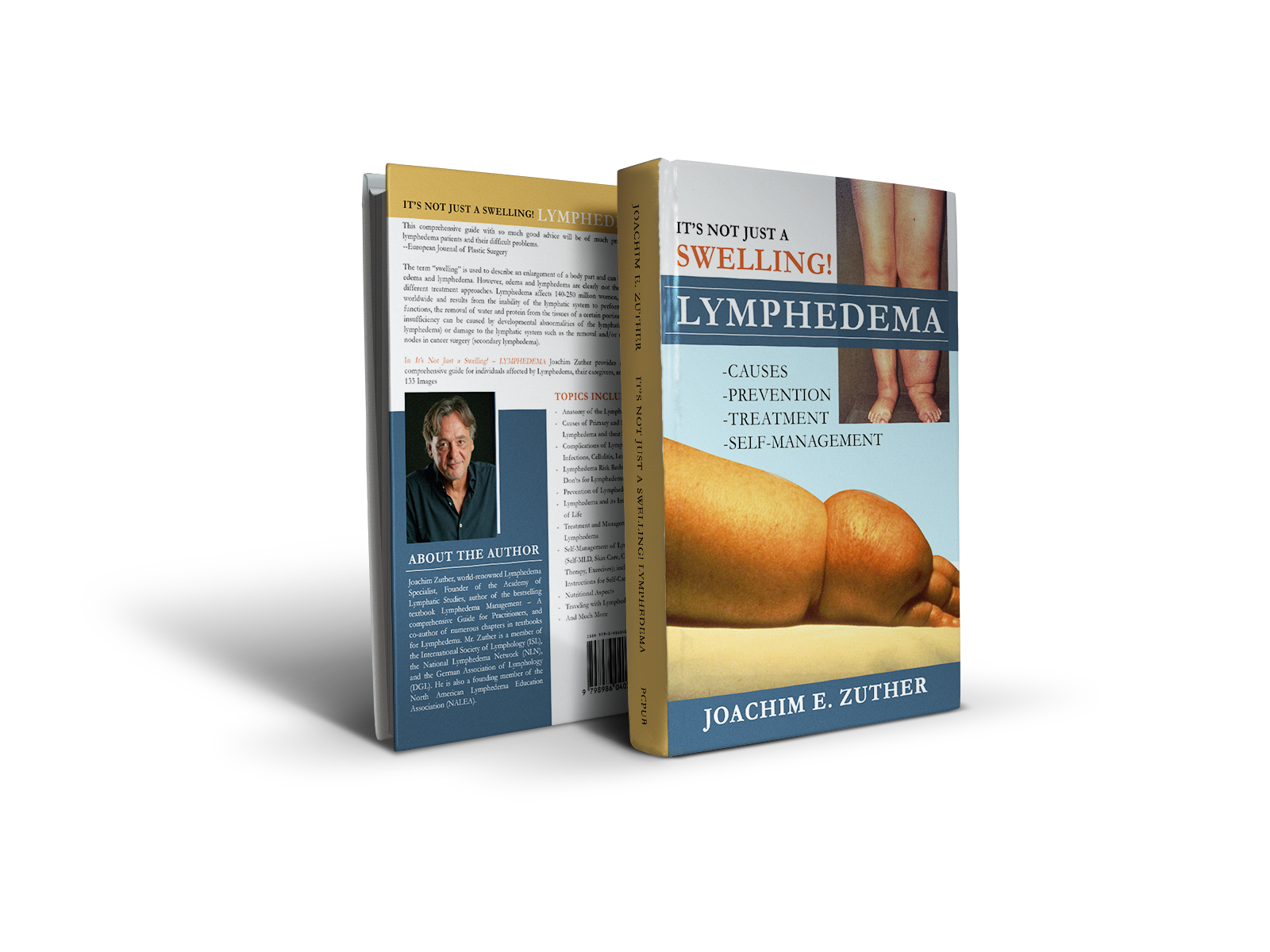I would like to thank Dr. Judith Nudelman for writing this article on the importance of practicing appropriate risk reduction for individuals affected by, or at risk of developing lymphedema.
 Dr. Nudelman is an Associate Professor of Family Medicine, Clinical at Alpert Medical School, Brown University. She is also a Certified Lymphedema Therapist (CLT), and practices family medicine while also teaching at the medical school and serving on the board of licensure. She is a co-founder of stepupspeakout (www.stepup-speakout.org).
Dr. Nudelman is an Associate Professor of Family Medicine, Clinical at Alpert Medical School, Brown University. She is also a Certified Lymphedema Therapist (CLT), and practices family medicine while also teaching at the medical school and serving on the board of licensure. She is a co-founder of stepupspeakout (www.stepup-speakout.org).
Here is Dr. Nudelman’s response:
This week I opened up a New England Journal of Medicine Journal Watch update and read: “Study Debunks Conventional Guidance in Lymphedema Prevention.”
This is a newsletter from a prestigious medical journal, reporting on a study from a Harvard affiliated hospital. It came from a very trustworthy source, could this practice changing information be trusted?
Well, I got the article and the editorial and I read every line, and found that the actual article didn’t prove that traumatizing an at risk arm with medical interventions was safe, and the editorial, unfortunately took a modest study and trumpeted that only two things cause lymphedema—obesity and infection—and taking blood pressures in the at risk arm should be the new normal. And then, the New England Journal took the editorial’s headline and dispersed it.
So, if you don’t take the time to get the article, or don’t have access to it, you could be under the belief that new studies show that traumatizing an at risk arm is completely safe. But that would be wrong.
On March 1, 2016 an article was published in the Journal of Clinical Oncology (1), from a group at Mass General who had followed over 600 women, taking perometry arm measurements at least 3 times, and they asked them if they’d had blood draws, injections, IV’s or blood pressure measurements in their at risk arm. Any woman who had flown on a plane and used compression was excluded from the study.
The Mass General study measured women with perometry, a laser measurement that is very good at measuring the volume of an arm from the wrist up. They defined a significant change as a 10% increase. They were careful NOT to say that women developed lymphedema, as there is no universal definition of lymphedema, but rather limited their findings to “increased swelling.”
Most women avoided medical trauma to their arms: only 2.1% had an injection and 8.5% had a blood draw.
The study concluded: “Although we cannot affirmatively state that risk-reduction practices have no effect on arm swelling, we hope to generate evidence that brings reasonable doubt to burdensome guidelines and encourage further investigation into non-precautionary behaviors and the risk of lymphedema. “
So, they didn’t find that in the small numbers of their patients who recalled having medical procedures in their arms or flew without compression that they had a large increase in swelling of the part of their arms they could measure. But they couldn’t definitively say it was safe.
The limitations of the study were that only a small percentage of the women recalled that they were exposed to risk, that it was self-reported, and that the perometer can’t measure swelling in hands, breasts, trunks—the entire quadrant that is at risk in breast cancer.
Also, volume measurement, used alone isn’t that sensitive for diagnosing lymphedema. Another study found that in 50 women, 5% measured a 10% increase but when they were clinically evaluated, an additional 31% had arm lymphedema and 8% had hand lymphedema. (4)
In the same Journal of Clinical Oncology, the article was reviewed (2), and these reviewers came to the conclusion that only obesity and infection are risk factors for lymphedema—ignoring all of the other risk factors such as radiation, number of nodes removed, genetic predisposition, chemotherapy and aging and stated: “As for other preventative behaviors, patients should be informed that there are not enough data to justify recommending strict adherence to avoiding skin punctures, blood pressure measurements, or use of compressive garments for air travel.”
This editorial looked at an older article for determining if women should wear compression for air travel (3). It’s not a great article. And even its author, who felt women shouldn’t wear garments on flights less than 4.5 hours, concluded: “this is not to say that there is no risk, or no women at risk, or that swelling never occurs.”
So, where does this leave the person at risk for lymphedema and their healthcare providers?
If their providers just read the one line synopsis, they might conclude that reputable journals have proved that no risk reduction behaviors are needed for lymphedema.
And that puts women in a very difficult place, as they may ask not to have blood pressure measurements—especially the high pressure automatic cuffs—or IV’s, or blood draws in their at risk arm and be met with resistance.
I asked Jane Armer, a noted researcher and head of the American Lymphedema Framework Project to review these articles, and she felt that as a clinician and researcher, they don’t change her recommendations. Avoid unnecessary trauma to an at risk arm.
The most controversial issue is the use of compression garments while flying in a person who has not developed lymphedema. The consensus is that at risk women should be carefully evaluated and discuss this with a knowledgeable physician, and if they chose to wear compression on a flight, to have it well fitted and to compress the hand as well as the arm.
Lymphedema is incurable. Why risk it? Even a low risk procedure will be 100% if it triggers lymphedema.
The movement to debunk lymphedema risk reduction behaviors comes from a desire to unburden women. Yet having lymphedema is a tremendous burden.
Risk reduction behaviors have not been debunked. But your healthcare provider might not have read the entire article, so you may have to advocate for yourself, or inform them.
See also: Risk reduction Guide
Dear Lymphedema Blog Reader – if you like the contents on this website, please help to keep it going. A great amount of work and research is necessary to provide you with up-to-date information on this site. Your donation supports these efforts and associated administrative costs. Surplus funds will be donated to Lymphedema/Lipedema-related charitable endeavors. Please donate using the “Donate Now” button on the right upper hand of this page – Thank You!
- Ferguson CM, Swaroop MN, Horick N, et al: Impact of ipsilateral blood draws, injections, blood pressure measurements, and air travel on the risk of lymphedema for patients treated for breast cancer. J Clin Oncol March 1, 2016 34:691-698
- Ahn S, Port ER: Lymphedema Precautions: Time to Abandon Old Practices? J Clin Oncol March 1, 2016 34: 655-658
- Graham PH: Compression prophylaxis may increase the potential for flight-associated lymphoedema after breast cancer treatment. Breast 11: 66-71, 2002
- Jeffs E, Purushotham A, Springerplus, 2016 Jan ;5:21, The prevelance of lymphoedema in women who attended an information and exercise class to reduce the risk of breast cancer-related upper limb lymphoedema


 Joachim Zuther, Lymphedema Specialist.
Joachim Zuther, Lymphedema Specialist. 

I have been a hospital based lymphedema therapist for 16 years and have seen several patients that actually had no swelling until after a blood pressure check was done on the arm. I had a large influx of patients after a hurricane when patients were evacuating and had to spend long hours in a car. I feel that a study that says there is no reason for concern is jumping the gun. Perhaps there should be more studies but for me I will continue to caution my patients.
I don’t go on the soapbox often…but here I am stepping up.
I want to share a part of my health journey with you. I hope this will inspire you to take action to help other women. There is a LINK at the bottom of this – PLEASE let Congress know you support us!
It is a long read… but hopefully you will glean some useful/interesting information to pass on to others.
No interest…just skip past .. I get it.
I have been battling a condition known as Lymphedema for the past 8 months.
Lymph • edema (lim – fa – DEE – ma) is chronic swelling (edema) caused by a build up of fluid (lymph) that occurs when the lymphatic system is either faulty or damaged. There is no cure for lymphedema, but it can be effectively treated.
Lymphedema is a condition that is painful, debilitating and disfiguring. There are many types but I am talking about the type associated with Breast Cancer and that results from breast surgery…especially with lymph nodes removal…and even greater with radiation treatments.
Very few women know or understand about lymphedema. I knew nothing about it and I was the patient. I thought they would just extract the fluid with a needle…or maybe offer some heat treatments. My surgeon did very little to prepare me for the reality. This is lifelong condition; yes, you read that correctly, a lifelong condition.
Twice a week I go for MLD therapy. MLD is Manual Lymph Drainage. It is like a massage of my arm, hand, back and chest to try to move the fluid. After MLD, my arm and hand are “wrapped” in what looks and feels like a soft cast. I keep this on for 24 hours…during which time I cannot drive or do many of normal ADL. On MLD days we are away from home 4 – 5 hours.
The other days I wear a tight compression glove and sleeve and another different one at night (both restricting and uncomfortable.)
My arm has not been responding well…actually getting worse the past month… so recently I started using a pneumatic compression pump two hours a day at home. You can see that my life literally is planned around my arm. I did not even mention the embarrassment of going in public with this huge arm …or having to buy clothes sizes too big to fit over the arm…or trying to sleep with this big padded sleeve. The cost of this stuff is crazy! I could go on and on…but you get the point. That’s my story.
I hope when a friend/family is being treated for lymphedema you will talk with them about it.
Recently some health insurance companies begun to cover the very expensive compression garments, extended therapy sessions and other devices needed to treat this disabling condition. Most general practice doctors have little or no knowledge of this condition, its treatment methods or the possible serious complications. Education is vital.
Four days ago a Bill was introduced into the House to cover some of the cost of treatments.
MAKE YOUR VOICE HEARD.
Click on the link below and vote to have this bill passed!
http://lymphedematreatmentact.org
Lymphedema Treatment Act
Amends title XVIII (Medicare) of the Social Security Act to cover certain lymphedema compression treatment items as durable medical equipment.
LEARN – UNDERSTAND – HELP!! We all know someone faced with breast cancer surgery. We need to support each other…and to have our voices heard. This condition deserves more attention from the medical community and more support from us!
“IF WE MOVE TOGETHER…WE CAN MOVE MOUNTAINS”
SHARE this post with anyone you think will listen.
Dear Pam, I’m with you…. I could have written your story, especially the part about my whole life is planned around “the big arm.” I am undergoing a lymph node transplant at Memorial Sloan Kettering on May 10th. Dr. Babak Mehrara and Dr. Joseph Dayan are the transplant team. There is hope! But, early intervention is key. If your lymphdema progresses too severely you will not be a candidate for a lymph node transplant or the less invasive venious bypass. And yes, My Blue Cross Blue Shield is covering this procedure. I believe Mayo is doing work in this direction, Sloan Kettering, and MD Anderson. My transplant procedure includes taking a group of lymph nodes from my abdomen and placing them in two places on my arm. It does not have immediate results, the goal is for the lymph nodes and veins they are transplanting will “grow,” into place. Sloan Kettering is having very good results with their team. Don’t give up! There has to be a better way.
Zoe, I am also scheduled for a lymph node transplant this summer at Univ of Chicago for lymphedema in my leg. I am wondering how your surgery went?
Lisa
I have read this article. I have had lymphedema for 10 years. I have it under control, but I do take precautions. I have no blood draw or BP checks on that arm and have had no push back from providers on using the alternate arm. Even having major surgery, the surgeon and hospital staff have been very accommodating. The patient definitely has to advocate for themselves. I do where a compression bandage when I fly, although a couple of times I forgot and there was no increase in swelling. It is better to be safe. Lymphedema is forever, and it is a burden.
In 2009, I was diagnosed with bilateral inflammatory breast cancer. I had 9 lymph nodes removed from under my right arm and 12 under my left. while receiving radiation treatment, I developed lymphedema in my left arm and hand. I was able to get the swelling down. However, sometime shortly after, I had a pet scan and told the technician that I couldn’t have the IV in either arm. He said that it would be ok to have it in my wrist in the left arm and proceeded to do so. A couple days later, lymphedema developed in my left arm. I still am working on getting the swelling down in the left arm, approximately 6 years later. So, I know for a fact that lymphedema can develop in an at-risk arm from an IV.
I have lymphdema. After Breast Cancer, bilateral mastectom July 2014, Chemotherapy, radiation and the removal of 25 lymph nodes….which progressed to three cellulitis episodes requiring hospitalization. I am not overweight. let’s get to the simple facts. Do you know how bad it hurt when a nurse erroneously placed a blood pressure cuff on my afflicted arm???? Be real, what a careless study. Even in the early stages of lymphdema undo pressure, a hug, etc, caused the arm to hurt. I was told to exercise the arm, get moving, do Yoga…. After the first downward dog my arm began swelling and only at night when raised on a pillow does my arm subside (somewhat).
I.e.- I am scheduled for a lymph node transplant May 10th and Memorial Sloan Kettering. Dr. Joseph Dayan and Dr. Babak Mehrara will be my transplant team. Keep you fingers crossed, say a prayer or whatever you do to send healing my way!
Hi Ladies,
Like you my lumphedema started as result of my breast cancer diagnosis, my lumpectomy and 12 weeks of radiation. At no time was I made aware of lymphrdema as a life long medical condition and what specific medical procedures as a result of my breast cancer diagnosis put me at higher risk for lymphedema. I do wonder if physicians feel the breast cancer diagnosis is so daunting, they dont want to deliver anymore terrible news? Had I known whatbthis condition consisted of I would not have had radiation. First evidence of my lymphedema came three years after the surgery and radiation. I had 8 nodes removed and after my surgery no cancer/ w recommendation for have radiation. I am currently getting manual drainage once a week and I wear a compression sleep daily unless I have some special event and dont want to wear it. I am small boned. My arm has grown from just below elbow and upper arm, but think it remains a slow growth. No medical procedures ever touches that right arm except my therapist. I am fairly assertive about it. I wanted to share with you info an ongoing clinical study by Dr. Roxson at Stanford University Hospital on an oral placebo. Go to Stanford website, search for Dr. Roxson and read about his work. It is exciting. I hadn’t heard about the lymph node replacement surgery. That sounds exciting too! I hope that those who try the sugery will let us know outcome.
Bestof luck to all of you!
V
Following a bilateral mastectomy & radiation I have Lymphedema in both arms, both axillas as well as my chest & back. I have been going for manual lymphatic drainage from certified therapists for over a year. I wear compression, use a pump and can honestly say I am no better. Because it’s in both arms my oncologist says I still have to get blood work every 6 weeks because I am on Verzenio. Zomata infusions every 6 months. All this is done in my left wrist. I now have Lymphedema in my left hand. In retrospect I should of left my chest port in but I hated it. Every single day I have discomfort, & heaviness. A constant reminder that the battle will never be over